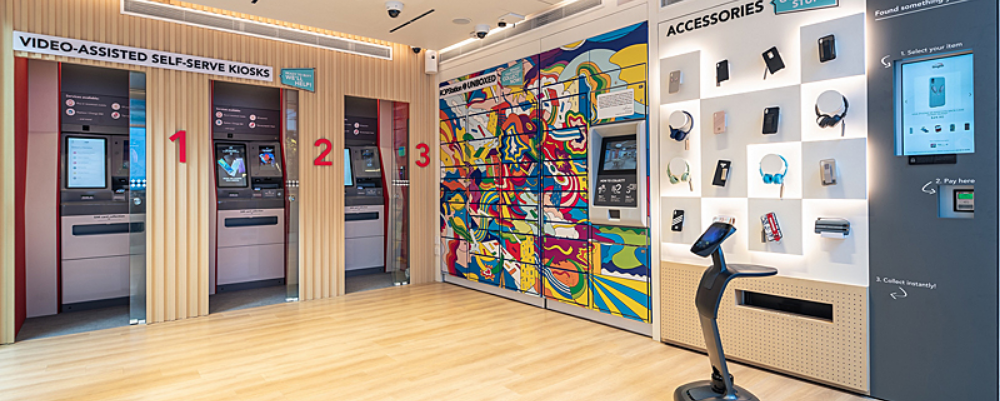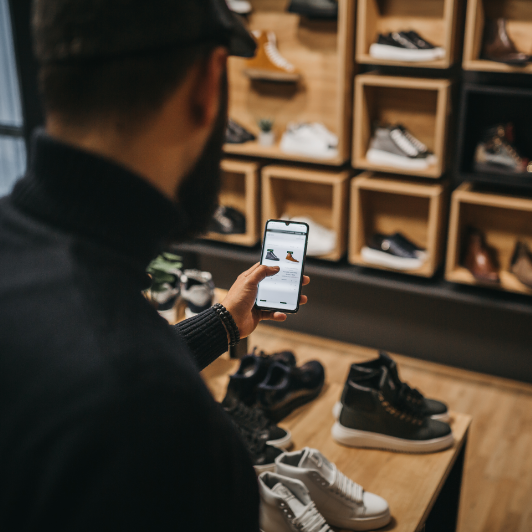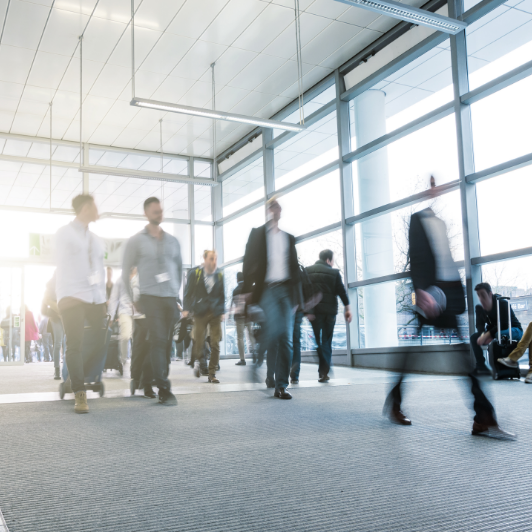Published: Sep 09, 2022
connected buildings: key to the future of work and public places
Introduction
Work is perhaps one of the areas of life that has been most shaken up by the Covid-19 pandemic. The shift to remote or hybrid working has caused many to re-evaluate the traditional 9-to-5 office-based working model. As Covid restrictions are being relaxed, many organisations have opted to continue with flexible work arrangements.
At the same time, many employers are thinking about how to attract and retain talent in light of the Great Resignation, a trend where workers are quitting their jobs en masse due to a range of factors, including job dissatisfaction, wage stagnation, and more. Employers now need to be more accommodating of employees’ needs than ever before. This includes offering them more choice regarding how and where they work.
According to a study conducted by Accenture, 85 percent of people who feel they can be productive anywhere plan to stay with their company for a long time. Meanwhile, a Microsoft study found that 73 percent of workers want flexible remote work options to continue while 67 percent want more in-person time with their teams. According to the same study, 66 percent of business decision makers are considering redesigning physical spaces to make them more suited to hybrid work environments.
Employers in Singapore have been encouraged to permanently offer flexible work arrangements. A joint statement released by the Ministry of Manpower (MOM), the National Trades Union Congress (NTUC), and the Singapore National Employers Federation (SNEF) earlier this year said that such arrangements help employees “achieve better work-life harmony and promote a more engaged and productive workforce.”

Connected buildings represent the next step in creating workplaces that can meet the expectations of today’s workers.
Fostering collaboration & boosting productivity
The spaces where we work have a big impact on our ability to excel at our jobs. Hence, many forward-thinking organisations are reimagining these spaces and equipping them with new technologies to ensure that they are more conducive to employees’ wellbeing, creativity, and productivity, and that they foster greater collaboration.
Google, for example, uses “Team Pods” to make workspaces reconfigurable according to changing needs. The pods consist of office furniture which can be easily moved into different arrangements. Microsoft, meanwhile, has designed high-tech conference rooms that allow remote and office-based workers to easily interact with one another.
When deploying technology in the workplace, it’s important to ensure that it is delivering the intended benefits and allowing employees to do their jobs better. Organisations need to look at how employees are using existing technology in the workplace so that they know how and where to deploy new technologies for maximum effect. “Technology shouldn’t be adopted for its own sake,” says Tan Chien Mien, Lead of NCS Engineering. “It should help employees complete their tasks more effectively and make their work easier and more enjoyable.”
Organisations are increasingly incorporating smart features in their office buildings to improve the overall user experience. For example, there is a building in Amsterdam which uses nearly 30,000 sensors to gather data like temperature, humidity, occupancy, and light levels. The data is analysed in real-time and the insights generated are used to automatically adjust the lighting, air conditioning, and so on to ensure that the building’s occupants are comfortable at all times.
Creating these connected buildings requires leveraging big data and techniques like machine learning (ML) while ensuring that different elements of the infrastructure work together in a seamless, secure, and reliable manner.
Optimising resources & making workplaces more sustainable
Besides providing a better user experience, connected buildings allow organisations to cut costs and reduce their environmental impact.
For example, sensor data can reveal water usage patterns which can be used to save water. “Let's say the usage of the water is higher on a particular day, then we know that there is something amiss, and further investigation can be done,” Tan says. “There could be some leakage somewhere. Without the data, it is not possible to identify an abnormality in the whole ecosystem.”
Likewise, lighting and air-conditioning systems that automatically adjust to the number of people working in a certain area can help optimise electricity usage.
Other smart spaces
It is not just office spaces that are evolving to meet the needs of a new generation of tech-savvy workers. Workplaces of all kinds are being transformed by smart technologies and high connectivity.
Take Singapore’s Changi airport, for instance. To ensure that there are enough taxis available for arriving passengers at any given time, a taxi management system keeps track of the number of taxis queueing at all four terminals as well as the number of flights arriving each hour. When the supply of taxis is about to fall short of demand, the team alerts taxi drivers via a purpose-built app called Cabs@Changi. The airport is also trialling ground sensors at taxi stands to collect real-time data on passenger numbers.
NCS has partnered with Marina Bay Cruise Centre Singapore (MBCCS) to create Asia’s first smart cruise terminal. The deployed crowd-management solution uses data science, video analytics, and predictive artificial intelligence (AI) to monitor passenger traffic and detect bottlenecks and other issues in real time. Insights gathered from smart devices are used to optimise resource planning, improve operational efficiency, and tighten the security of the terminal. For example, when the check-in queue is slow-moving, the system will automatically trigger an alert to operators so that they can respond by opening more counters. Alerts will also be sent to operators to attend to emergency incidents.

In the retail space, Singtel has launched Unboxed, an unmanned portable 24/7 store which allows customers to purchase products using a self-service kiosk. Customers can interact with a concierge robot or chat virtually with remote human staff.
Security enhancements & privacy concerns
Workplace security can be greatly improved by leveraging AI and big data. Leong notes, for instance, that intelligent technologies can grant people access to a building or specific areas within a building based on multiple forms of authentication, such as iris or face recognition. Tan adds that these technologies can make the onboarding process smoother — new employees can send in a photo before their first day of work so that the facial recognition system can identify them from the moment they first show up.
Tan also points out that smart technology can assist security officers. Data collected from sensors can be used to provide officers with remote real-time updates. Officers can be alerted to what is going on in all areas of a building at all times. Moreover, using video analytics, officers can be automatically alerted to suspicious objects or behaviour, thus reducing the need to make regular patrols.
It is even possible to have robots patrol crowded areas to detect and prevent illegal, dangerous, or anti-social behaviour. In Toa Payoh, Singapore, a robot called Xavier has been deployed to monitor the public areas and alert the command centre when it detects offences such as illegal hawking and smoking in prohibited areas. The robot can also issue warnings via voice messages and an onboard interactive dashboard.
However, big data brings its own set of challenges in terms of security and privacy. IT systems can be hacked and many people are rightly concerned about the potential for misuse of their personal information. Hence, it is important that organisations invest in strong cyber security and develop a robust data governance strategy.
Conclusion
As the nature of office and city life continues to change, it is clear that the workspaces and public spaces of the future will look radically different to the ones we have today. Employers will have to harness the benefits of smart buildings and smart workspaces to give employees greater flexibility and make it easier for them to collaborate with their colleagues, whether in person or through digital platforms.
Increasingly, organisations need to cast their recruitment nets beyond the geographical areas in which they are based and include more remote and hybrid workers in their talent pools. To attract such workers, they need to ensure that they have the proper digital infrastructure in place.
It goes without saying that smart technologies will play a central role in the workplace of tomorrow. However, if organisations want to see good employee retention they will need to ensure that the technologies they deploy in the workplace properly serve the needs of their employees and that they foster meaningful connections and build trust between everyone in the organisation.



